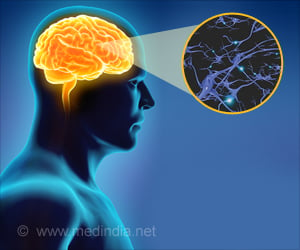
‘Drug research for neurological conditions linked to myelin loss such as multiple sclerosis (MS) could be accelerated by the newly developed tiny 3-D models that mimic vital aspects of the human nervous system. The present model thus remains a significant step forward in the study of human myelination and drug development.
’
Tweet it Now
The brain and the spinal cord consist of nerve cells that connect with branch-like links called axons. These branches have an insulating coat similar to electric cabling, which is called myelin. Myelin thus aids the electrical and chemical information flow between cells. Myelin in Multiple Sclerosis
Several neurological conditions like Multiple Sclerosis (MS) are caused by damaged myelin. Multiple sclerosis is an incurable disease that leads to a wide range of symptoms, including mobility issues, fatigue, and vision problems. It is shown to affect more than 100,000 people in the UK.
The team reprogrammed the skin cells into induced pluripotent stem cells, which can be turned into other cell types, in this case – spinal cord cells. These cells were then grown slowly into organoids - 3-D structures of cell bundles including neurons and distinctive brain cells known as oligodendrocytes that are key to creating myelin.
Spontaneous development of myelin around the axons was observed between cells within the organoids. It was also seen that the myelin in this model was functioning as it would in a healthy brain or spinal cord.
Advertisement
An organoid was thus created using stem cells from a patient with a rare gene mutation that affects myelination. The model showed that key aspects of this cell bundle were consistent with the disease.
Advertisement
The study team anticipates that the present model may overcome the challenges of studying the human brain and nervous system at the cellular level, which is extremely difficult due to problems accessing brain and spinal cord tissue without risk and a huge inconvenience to patients. The approach complements animal models, which can be limited in how they reflect human disease and the way that drugs interact with human cells.
"Demyelinating disorders have a profound effect on the quality of life for patients. Now we have the capability of studying human myelination experimentally, a major goal is to identify drugs that can promote myelination. We believe that this new approach could be a huge boost to the toolbox that allows us to do this effectively," says Dr. Owen Gwydion James, the Lead researcher.
The study thereby affirms that the present model is a significant step forward in the study of human myelination and drug development. However caution is posed that treatments tested on this model are still some way from being offered to patients.
Source-Medindia













